The fuel tank is removed for preventative flushing or to eliminate leaks
In addition, it is sometimes necessary to remove the fuel tank to gain access to other parts when repairing or replacing them
The fuel tank does not require regular special maintenance in operation, but periodically (about once every 2-3 years) it is recommended to remove it from the car, drain the sediment and wash it with clean gasoline.
For preventive purposes, to reduce the intensity of sludge formation, it is recommended to fill the tank with gasoline through a fine brass mesh that retains water.
In addition, in winter, as well as when storing a car for a long time, it is recommended to keep the tank as full as possible, so that when the ambient temperature changes, condensation or frost does not form on its walls, which turns into water during a thaw.
Removing the tank of a GAZ-2705 truck
To remove the tank of a truck you need to do the following.
Disconnect the wire from the negative terminal of the battery.
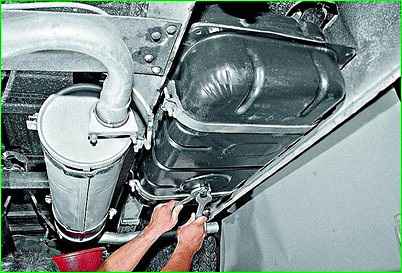
Drain the gasoline from the tank by unscrewing the drain plug from the bottom.
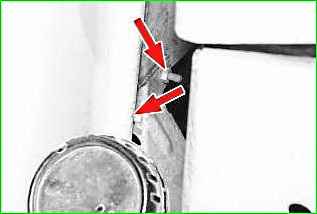
Unscrew the two nuts securing the fuel tank filler pipe to the rear wall of the cabin.
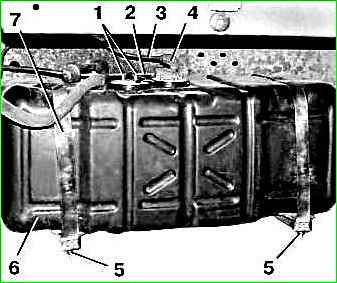
Disconnect the wires from the fuel level sensor by unscrewing two nuts 1.
Disconnect fuel supply lines 2 and fuel drain lines 3 from intake pipe 4.
Unscrew the two nuts 5 and remove the fuel tank 6, sliding it towards you.
If you need to remove clamps 7, remove the lock washer and remove the clamp fastening pin from the bracket.
Removing the tank of a GAZ-2705 van
To remove the fuel tank of a van, perform steps 1 and 2, and then carry out the following operations.
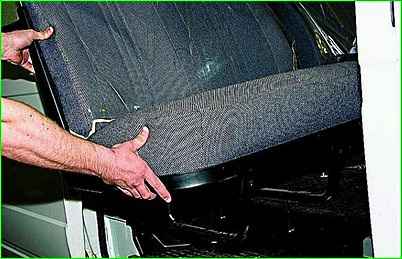
Removing the rear passenger seats
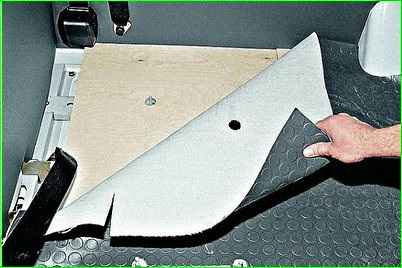
Fold up the edge of the floor mat
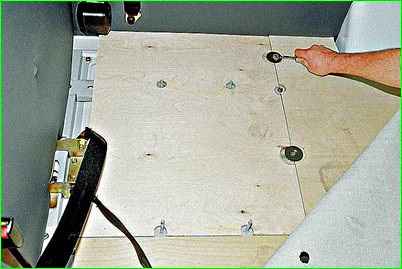
Use a 10mm wrench to unscrew the two bolts securing the plywood covering to the floor
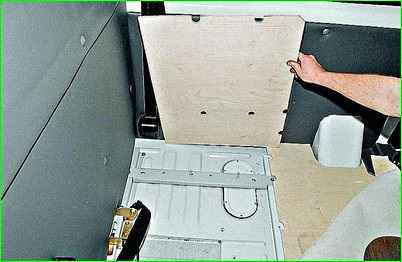
Removing part of the plywood floor covering

Use a 12mm wrench to unscrew the two seat beam mounting bolts.
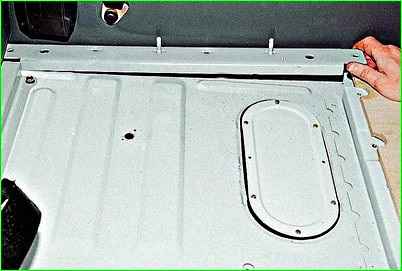
Move the beam and remove it.
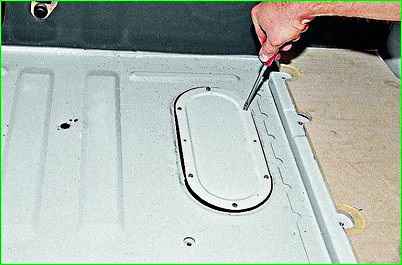
Use a slotted screwdriver to unscrew the eight screws securing the floor hatch
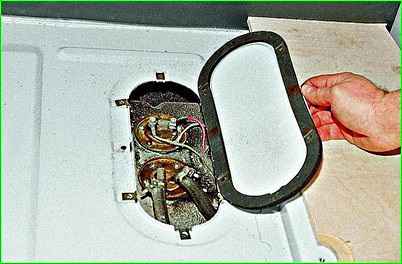
Remove the hatch along with the gasket.

Disconnect the wires from the fuel level sensor

Disconnect the fuel supply line

Disconnect the fuel drain line
For cars with injection engines

Disconnect the wiring harness block
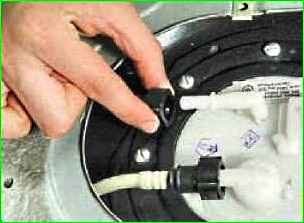
Disconnect the pressure and drain hoses from the fuel pump module

Open the filler hatch cover and remove the two screws securing the filler neck to the body.
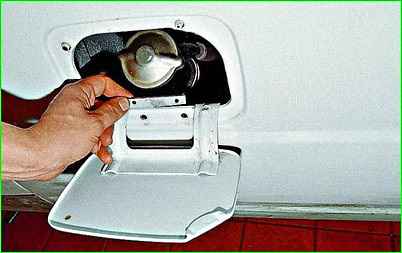
Remove the mounting plate
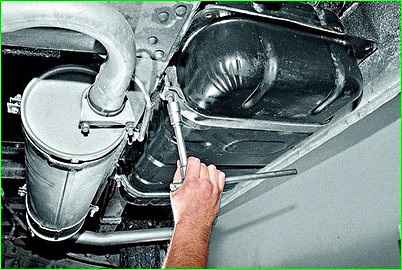
Holding the tank, use a 17mm head to unscrew the nuts securing the tank mounting clamps
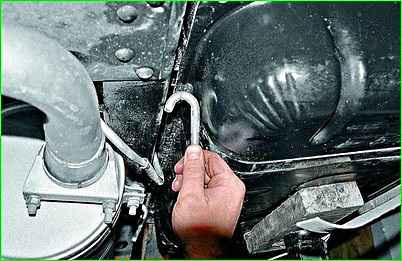
Remove the hooks of the clamps from the holes in the frame side members

Carefully remove the fuel tank, taking care not to catch the filler neck on body parts
Install the tank in reverse order, not forgetting to place gaskets under the clamps.
Fuel tank repair

Loosen clamp 1 and disconnect hose 2 from the fitting on the fuel tank.
Loosen the clamp 4 and remove the filling pipe 3 with hose 2.
Unscrew the six fastening screws and lift up the fuel intake pipe 5.
Unscrew the six fastening screws and lift up the fuel level sensor 6.

Take out pin 1 and remove strainer 2 and spring 3 from the fuel intake pipe
Rinse the fuel tank thoroughly with gasoline.
Then rinse and steam the fuel tank with a stream of hot water to remove gasoline vapors.
To check the tightness using the pressure test method, connect a compressed air supply hose to one of the openings of the fuel tank and plug all other openings.
Immerse the tank in a bath of water and apply compressed air at a pressure of 0.2 atm. In areas of leakage, air bubbles will escape.
Detected leaks near a metal tank can be soldered with soft solder. The plastic tank needs to be replaced.
You can only solder a thoroughly washed and steamed tank that does not contain gasoline vapors, in order to eliminate the possibility of fire.
Wash the mesh filter of the intake tube thoroughly; if cleaning is impossible, replace the filter.
Inspect the fill pipe and air pipe hoses. If the hoses are cracked or the rubber has lost elasticity, replace them.
Inspect the tank mounting clamps. Cracks and significant corrosion on clamps unacceptable - defective clamps must be replaced.
Assemble the fuel tank in the reverse order of disassembly.





